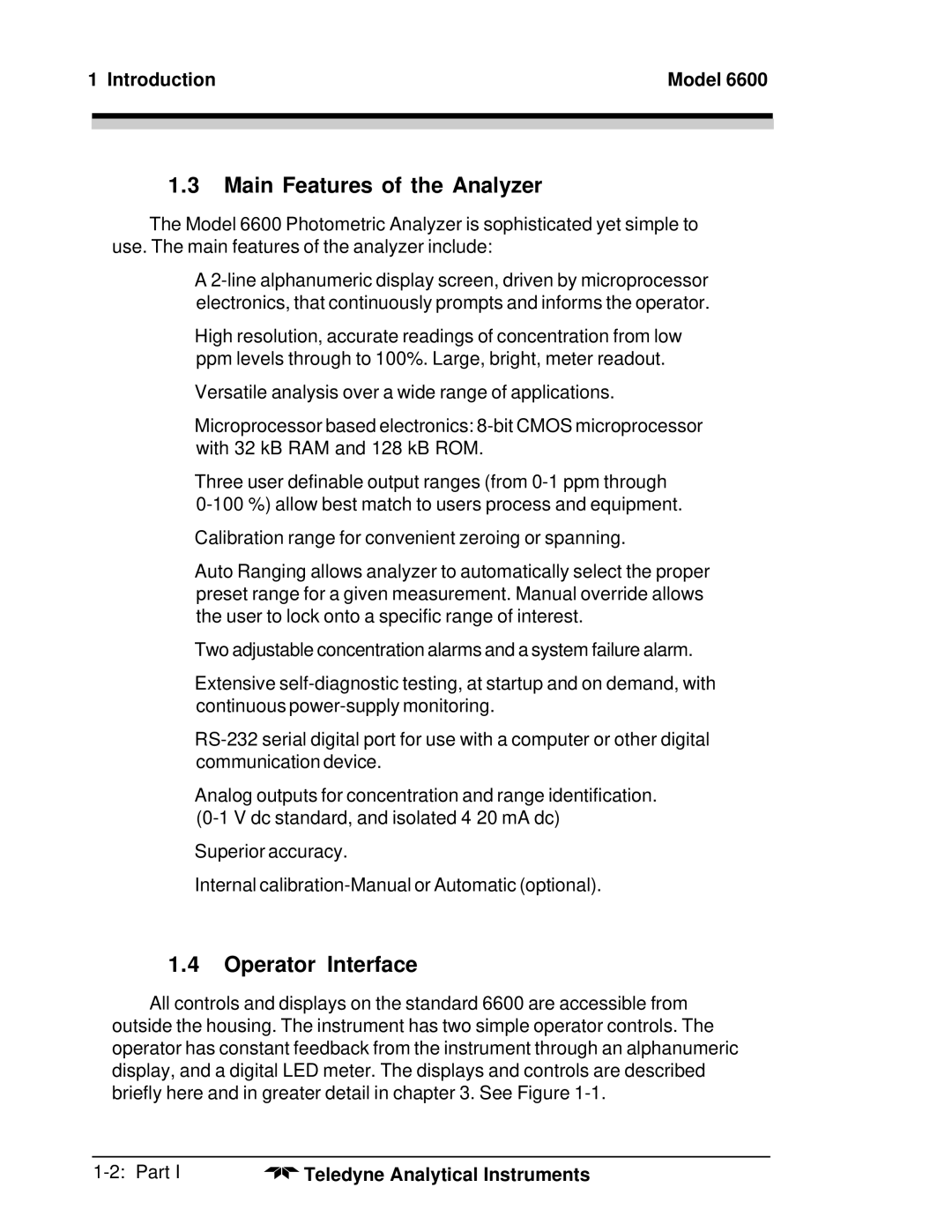1 Introduction | Model 6600 | |
|
|
|
|
|
|
|
|
|
1.3Main Features of the Analyzer
The Model 6600 Photometric Analyzer is sophisticated yet simple to use. The main features of the analyzer include:
•A
•High resolution, accurate readings of concentration from low ppm levels through to 100%. Large, bright, meter readout.
•Versatile analysis over a wide range of applications.
•Microprocessor based electronics:
•Three user definable output ranges (from
•Calibration range for convenient zeroing or spanning.
•Auto Ranging allows analyzer to automatically select the proper preset range for a given measurement. Manual override allows the user to lock onto a specific range of interest.
•Two adjustable concentration alarms and a system failure alarm.
•Extensive
•
•Analog outputs for concentration and range identification.
•Superior accuracy.
•Internal
1.4Operator Interface
All controls and displays on the standard 6600 are accessible from outside the housing. The instrument has two simple operator controls. The operator has constant feedback from the instrument through an alphanumeric display, and a digital LED meter. The displays and controls are described briefly here and in greater detail in chapter 3. See Figure
Teledyne Analytical Instruments |
